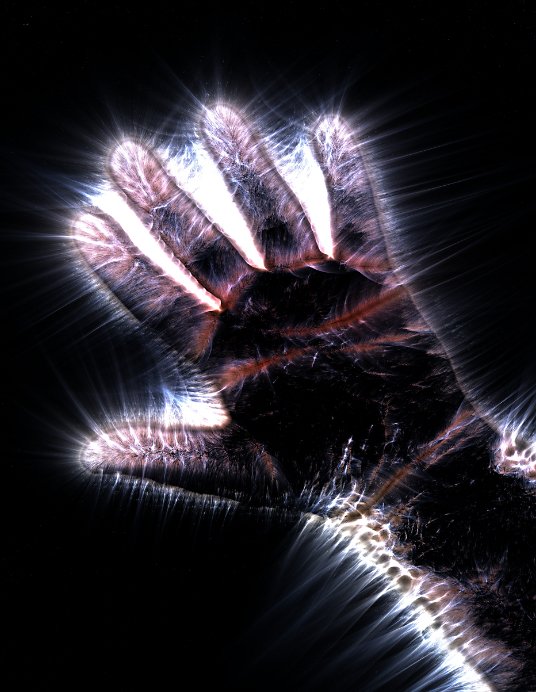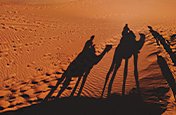Use Kirlian photography to create high-voltage photo images.
Kirlian photography, also known as electrophotography, is the art of capturing coronal discharges. Learn how to create psychedelic images on a photographic plate, no camera required.

What is Kirlian photography?
Kirlian photography is a way to create images of coronal discharges around an object. A coronal discharge is an electrical discharge caused by the ionisation of gas or fluid surrounding an object. These discharges often look like an energy field or a halo around the subject, so some people consider Kirlian photos a kind of aura photography.
To achieve the halo effect, the photographer lays an object onto an electrified photographic plate or paper. When a high-voltage electrical current runs through that plate or paper, it creates a coronal discharge (sometimes called a gas discharge) in the air around the object. “It is a photo, but you’re not using a camera,” says photographer Charlie Watts. “You’re doing a contact print. You don’t need a lens or a camera body.”
The origins of Kirlian photography.
Photography and electricity were new, exciting technologies in the 1800s and multiple inventors and experimenters combined the two. Curious to see what would happen when these technologies met, they put their hands, leaves or other objects on photographic plates and experimented with connecting the metal plates to a power source. These initial results were called electrography.
In 1939, Russian inventor Semyon Kirlian and his wife Valentina saw something new and fascinating. “They observed a hospital patient receiving treatment from an electrical generator,” says aura photographer Jamie Conkin. “When the electrodes were placed near the patient’s skin, there was a neon glow.” The incident inspired the Kirlians to try and capture the glow of electricity on camera. Because of their work, these aura-like images later became known as Kirlian photography.


During their experiments, Kirlian placed a hand on an electrified photographic plate. The result was an electrographic image that outlined his palm in what looked to be vibrant, pulsating energy — the electrical coronal discharge in the air around his hand. The Kirlians had figured out how to make aura-like images without cameras or photographic film. They just needed a discharge plate, an electric field and a high-voltage source. (Capturing Kirlian images requires the use of electrical currents, so proceed with caution.)
Kirlian photography and supernatural beliefs.
After Semyon and Valentina Kirlian developed their technique, they promoted it as a diagnostic tool and claimed that the images produced by their electrographs showed the aura, life force or emotional state of the subject.
"There’s a famous photograph they took of a leaf, where the leaf is ripped in half, rephotographed and you can still see the whole leaf,” says Watts. “That’s where a lot of the mystical aspects came from, but actually it’s just moisture content.” The Kirlians became more well known in the US in 1970 thanks to a book by Lynn Schroeder and Sheila Ostrander, Psychic Discoveries Behind the Iron Curtain, which became popular with New Age enthusiasts.
The Kirlians’ claims that photography could be a window into spiritual matters had ample precedent. “Famous people like Sir Arthur Conan Doyle had these meetings to document ghosts and paranormal activity,” says Watts. “Around the 1880s, more people had access to cameras and anyone could take photos. There was a huge boom in paranormal photography.” When the Kirlians did their experiment in 1939 and when Schroeder and Ostrander popularised their work for a Western audience, the existing culture around the occult catapulted this style of photography into popularity.
"Now it all can be explained pretty easily,” says Watts of the ghosts and other phenomena people once thought populated early photography.
Mainstream medicine does not recognise Kirlian photography as a diagnostic tool and images of coronal discharges vary depending on humidity, the type of electrical grounding and connectivity. However, even if they don’t reveal the supposed bioenergy of living things, the images and the corona effect are still beautiful.
Make your own art inspired by the Kirlian effect.
You can make electrophotographic images of your own with easy-to-find materials and the right space. “You need a dark space without any sunlight, so you can control the light,” says Conkin. If you’re using photographic paper that will be exposed on contact with light, work in a darkroom.
When you have the right lighting conditions, set up your photographic paper and a means of running a current through it.

"You need a conductor that is touching the object you’re trying to photograph, which is touching the film. The conductor runs through the object to a separate conductor, which sends an electric current through the film,” says Conkin. About 75khz should be sufficient to create Kirlian images. Be careful not to shock yourself when working with conductive materials or a high-voltage power supply.
Because humidity, connectivity and grounding all change what a coronal discharge can look like, you can also manipulate those variables to create different kinds of Kirlian-inspired images. A wet surface will look different from a dry one and a strong voltage will give you a different result than you’ll get from a weaker one.
Do not place your hands or any other body parts on electrified plates while attempting Kirlian photography. Semyon Kirlian himself experienced multiple electrical burns during his experiments, so use caution. Because Kirlian photography involves exposing the subject to a high-voltage pulse, use inanimate objects rather than humans or animals.
You can simulate the effects of Kirlian photography much more safely in Adobe Photoshop with the addition of a halo effect and adjustments to colour, saturation and hue.
Kirlian images still intrigue audiences. You can use them to show the outline of objects and aura-like electrical coronas around them. “It’s more of an art practice now,” says Watts. “They’re beautiful photographs. A lot of times these electrified objects will look like the cosmos.”
Contributors
Do more with Adobe Photoshop Lightroom.
Edit photos easily with Lightroom presets, Super Resolution, easily share photos from any device and access your projects anywhere with cloud photo storage management.
You might also be interested in…
Unlock the secrets of shadow photography.
Learn how to capture dramatic shadows that add balance, depth, and intrigue to your photos.
Understanding the art of surreal photography.
Look into the world of surrealism and find out how to make your own dreamlike images.
Silhouette photography tips and tricks.
Explore how to evoke mystery and intrigue with silhouette photography.
Get your glow on with this simple technique.



